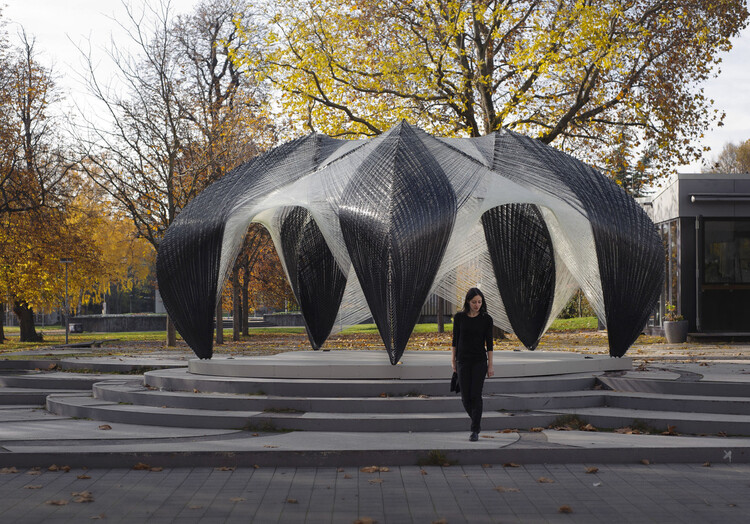Temporary Architecture: Innovation, Testing-Ground and Entertainment

Beyond “experience tourism” and light entertainment, temporary architecture is a fertile ground for testing ideas, examining places, popularizing new concepts and technologies. Taking a wide array of forms, from disaster relief projects and utilitarian structures to design experiments, architectural statements and playful installations, transient structures showcase alternative visions for the built environment, opening up new possibilities and questioning established norms. As temporary architecture now seems at odds with sustainability imperatives, the following discusses the value of temporary architecture as a vehicle of experimentation, advancing design and engaging communities.

The allure of the temporary and the ephemeral can be found throughout the history of architecture, but it was perhaps The Great Exhibition of 1851 and its Chrystal Palace that crystalized the idea that modernity can be expressed in temporary structures. In the 70s, the metabolists further challenged the concept of permanence that seemed to define architecture, while the 21st century saw the proliferation of international exhibition, design festivals and a whole array of events that brought a new wave of temporary designs, which seem to be developing into an emergent professional field.
Advertising an Idea
Related Article

The limited lifespan of this kind of intervention becomes an alibi for highly speculative projects. Freed from conventions, certain interventions open up meaningful conversations for the future of architecture and urban planning. In 2016, MVRDV created the Stairs of Kriterion installation, expanding the public space on the roof of a prominent building in Rotterdam. The temporary intervention was a compelling illustration for new city development and catalyzed a wave of acknowledgement of this untapped spatial potential. Building on this temporary project, MVRDV has recently produced a catalogue of ideas to make use of Rotterdam’s empty flat roofs.
Placeholders

In some instances, temporary structures are transient replacements for other venues. The very specific purpose and time frame bring into focus the idea of design for disassembly and adaptive reuse. Most recently, while the 19th century Grand Palais in Paris is undergoing renovation, a temporary structure dubbed Grand Palais Éphémère will take its place in hosting Paris’ major art events. Similarly, the Shengli Market is a temporary market designed by Luo Studio in China to serve the community while the old one was being renovated. Both projects can be dismantled, recycled, or reused for other constructions.
Exploring New Technologies

Freed of the rigours of commercial architecture and building regulations, temporary architecture is the perfect opportunity for showcasing new technology and construction methods. In this sense, the Institute for Computational Design (ICD) and the Institute of Building Structures and Structural Design (ITKE) have been creating a series of experimental pavilions to develop applications for the field of architecture. Pushing the boundaries of engineering and construction, the structures illustrate the potential of new technologies before deploying them on a larger scale.
A Vehicle of Urban Interventions

A potential precursor to conventional development processes, temporary interventions in the urban environment represent an adaptable framework for testing the validity of urban renewal strategies, helping define the potential to regenerate neglected spaces, consolidate the social infrastructure of a city, or improve public perception of various sites. For Manifesta 14, Carlo Ratti Associati designed a series of temporary urban interventions exploring different ways of reclaiming public space as part of a framework for participatory urbanism. Citizens will give feedback, highlighting which interventions should be preserved and consolidated.
The Value of Play

Oftentimes, rule-breaking structures are meant to engage communities, enriching the experience of the public realm. The Berlin-based design studio Plastique Fantastique operates in the field of temporary architecture, creating performative urban settings. Its pneumatic structures create alternative spaces, provide the framework for temporary activities, acknowledging the value of experience and play. Building on the work of 1960s utopian group Haus-Rucker-Co, the creations of Plastique Fantastique play with boundaries and the scenes of daily life.

Intended as temporary projects, structures like the Eiffel Tower or London Eye became a fixture of public space, while projects like Mies van der Rohe’s Barcelona Pavilion or the Smithson’s House of the Future illustrated compelling visions of a new architecture. These examples, along with their contemporary counterparts, show the potential lasting impact of temporary architecture.
from WordPress https://ift.tt/3ytljOD
via IFTTT










No comments:
Post a Comment